Echoes from the Northern Expanse
In the shadow of Mount Yōtei’s snow-capped sentinel, where the winds of Ezo whisper of old wounds and new wars, Ghost of Yōtei rises like a vengeful aurora from the ashes of its predecessor. Crafted by Sucker Punch Productions, the Bellevue artisans who forged Infamous‘s electric escapades into Ghost of Tsushima‘s samurai symphony, and published by Sony Interactive Entertainment, this October 2, 2025, standalone sequel ($69.99 Standard, $79.99 Digital Deluxe with its haiku handbook and soundtrack suite) transports players to 1603 Hokkaido, a frontier forged in feudal fire and Ainu frost. Spanning 40-50 hours for the main saga’s seven Yōtei hunts, plus 20 more for side-scrolling sojourns, it’s a premium pilgrimage across Ezo’s rugged ridges, from wildflower wilds to aurora-veiled valleys, exclusive to PS5 with Pro-enhanced panoramas. Unlike Tsushima‘s Mongol maelstrom, Yōtei’s tale trades invasion for intimate vendetta: Atsu, a half-Ainu onna-musha voiced with feral fire by Erika Ishii (English) and Fairouz Ai (Japanese), returns after 16 years to carve through the “Yōtei Six”, masked marauders who massacred her kin and left her pinned to a blazing ginkgo like a butterfly on a blade.
Atsu’s arc is a katana’s keen edge: orphaned at 11, hardened into a haunted mercenary, her quest unfolds non-linearly, hunt the Snake’s serpentine schemes in misty mangroves or the Oni’s ogreish outposts in obsidian onsen, culminating in a climactic clash with Lord Saitō, the self-crowned “Shogun of the North” plotting Ezo’s usurpation. Supporting shadows sharpen the shine: Oyuki the shamisen-strumming shinobi (Jeannie Bolet/Romi Park), a former Kitsune seeking atonement; Jubei (Noshir Dalal/Shogo Nakamura), Atsu’s long-lost brother and Matsumae loyalist; and niece Kiku (Suzie Yeung/Shion Wakayama), a captive whose pluck pierces the pathos. The plot pulses with 13 Assassins‘ bloody ballet and Lady Snowblood‘s icy ire, a revenge riff that’s “predictable yet potent,” as one critic carved, with flashbacks flickering like foxfire to flesh out fractures, maternal mysteries mingling with mythic maledictions. It’s a yarn that yanks the heartstrings without yanking punches, though its pacing occasionally plods like a pilgrim’s penance, side quests sagging under “prehistoric” weight amid the main’s muscular momentum.
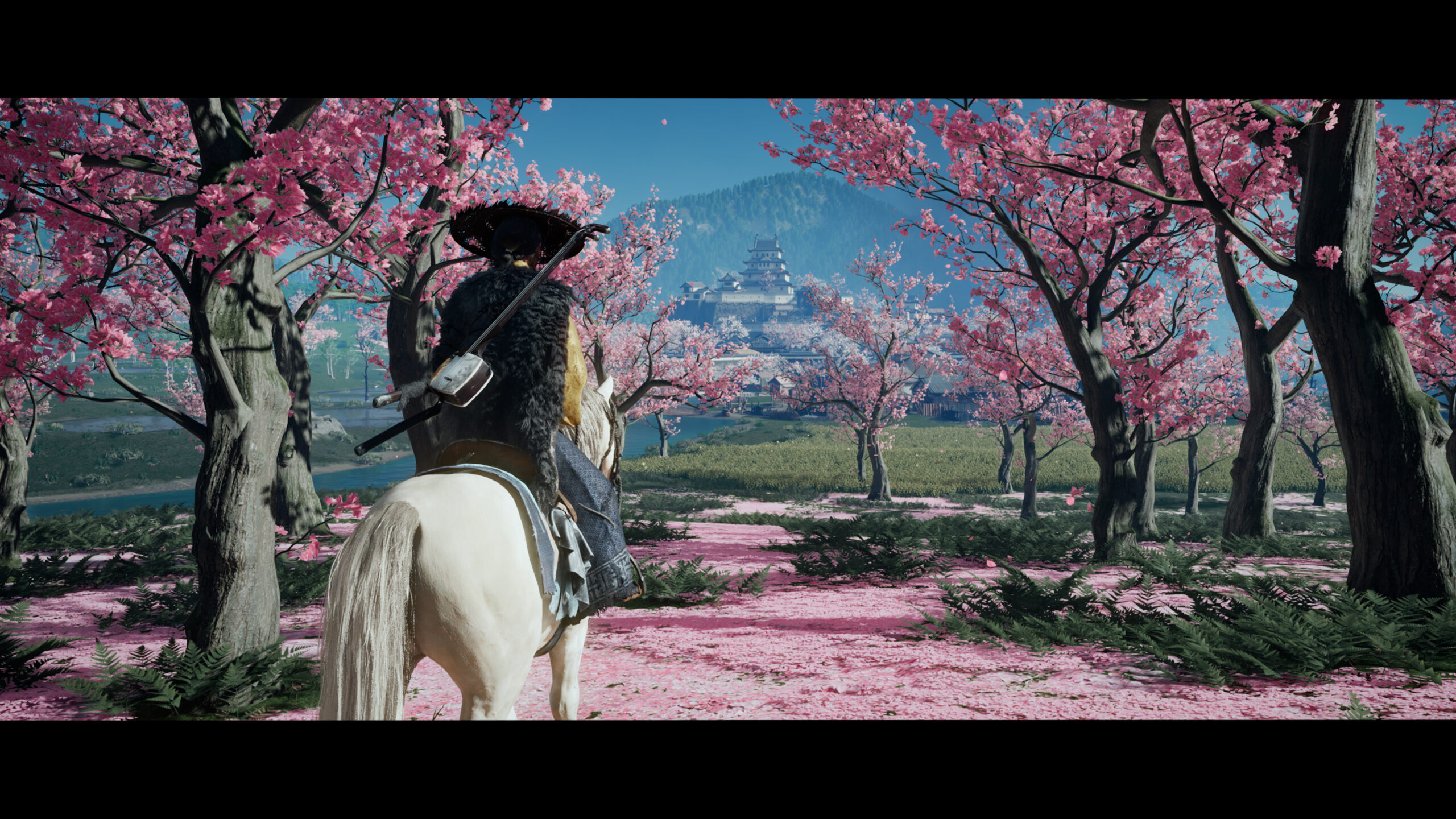 For Tsushima trailblazers who tallied 10 million sales, Yōtei’s northern novelty, Hokkaido’s hot springs and horse herds, inspired by Sucker Punch’s Shiretoko sojourns, feels like a fresh forge, blending Ainu authenticity (consulted elders etched emblems and etymology) with cinematic swagger. Pre-release buzz boiled over at TGA’s “Most Anticipated” nod, but launch’s launchpad included a dev’s doxxed drama, a Bluesky barb at Charlie Kirk sparking Sony’s swift severance, casting a controversial cloud that critics cleaved as “unrelated to the art.” Subtle humor slices the somber: Atsu’s wry retort to a bounty’s ballad, “They call me onryō; I call it overtime”, a wry wink that even ghosts gripe about gigs.
For Tsushima trailblazers who tallied 10 million sales, Yōtei’s northern novelty, Hokkaido’s hot springs and horse herds, inspired by Sucker Punch’s Shiretoko sojourns, feels like a fresh forge, blending Ainu authenticity (consulted elders etched emblems and etymology) with cinematic swagger. Pre-release buzz boiled over at TGA’s “Most Anticipated” nod, but launch’s launchpad included a dev’s doxxed drama, a Bluesky barb at Charlie Kirk sparking Sony’s swift severance, casting a controversial cloud that critics cleaved as “unrelated to the art.” Subtle humor slices the somber: Atsu’s wry retort to a bounty’s ballad, “They call me onryō; I call it overtime”, a wry wink that even ghosts gripe about gigs.
Blades in the Blizzard: A Dance of Disarms and Dodges
Combat in Ghost of Yōtei is a whirlwind waltz of weapon whims, ditching Tsushima‘s stance shuffle for a “counter cascade” that cascades counters like cherry petals in a gale: Atsu’s arsenal awakens with her father’s katana, a heirloom honed for haughty hacks, but blooms into a bushido buffet, yari spears skewering spearmen, kusarigama chains whipping whirling dervishes, ōdachi greatswords cleaving clusters like a colossus in a crowd, and dual-katana duels that dazzle with dual-wield delirium. Ranged riffs return refined: hankyu half-bows for hushed headshots, yumi longbows for lethal lobs, and the tanegashima matchlock’s smoky snarl for thunderous takedowns, all augmented by throwable tomohawk tosses or pilfered pikes flung like frontier frisbees. The hookshot, a grapple gambit from the get-go, hooks horizons for high-flying hijinks, yank a yokel from a yakitori stand or zip-zag ziggurats, turning traversal into tactical tango.
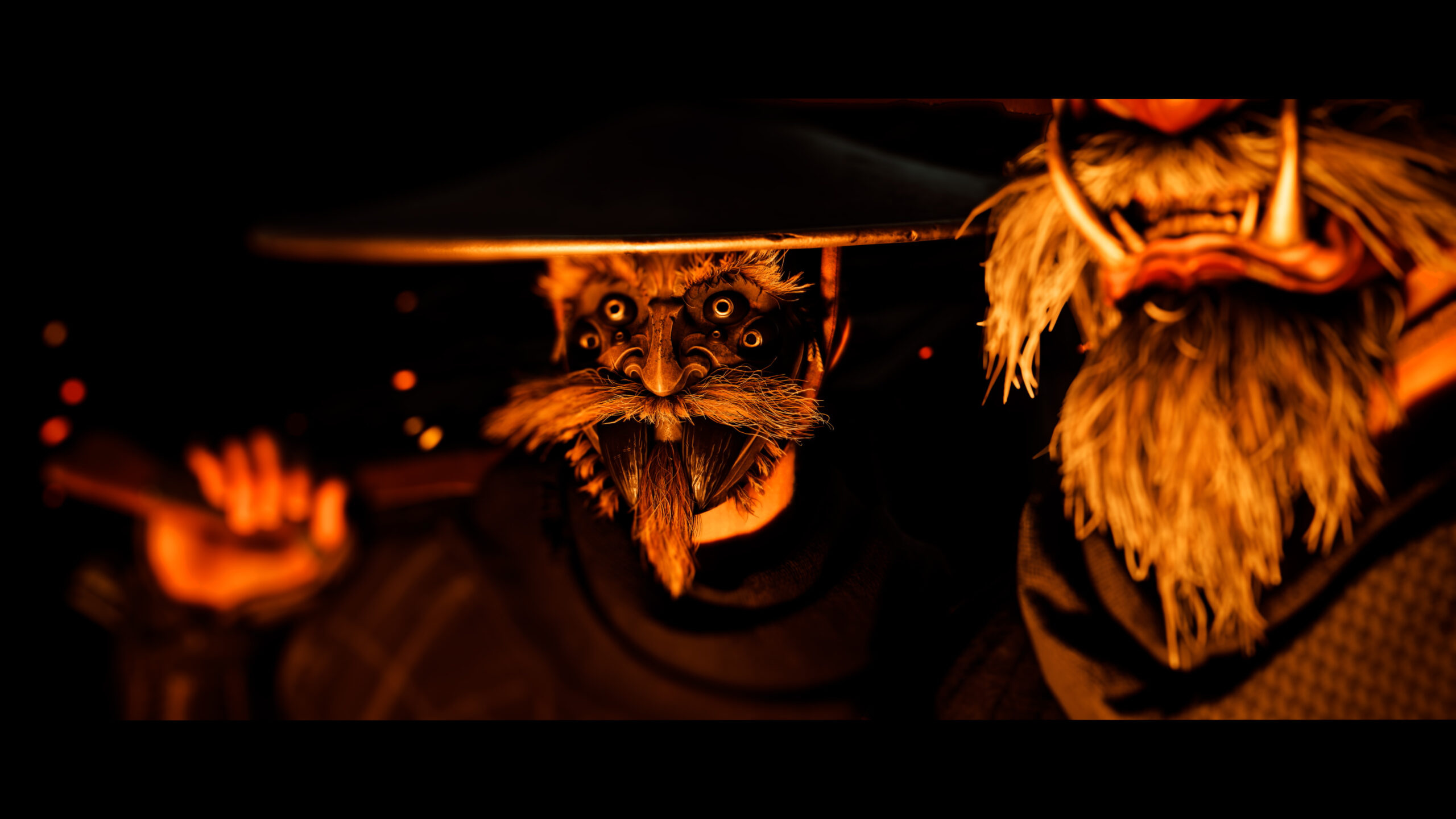 The wolf summon, Atsu’s ethereal ally, adds a lupine layer: whistle for a whirlwind whirlwind that worries flanks or fetches fallen foes for finishing flourishes, a “furry friend with fangs” that one previewer punned as “man’s best frenemy.” Disarms define the duel: a parry’s perfect pitch can pluck a polearm from a pikeman’s paw, letting you lob it back like a lethal loaner, or snatch a sword for a seamless swap mid-scrimmage, a mechanic that “elevates every encounter to cinematic choreography,” as testers toasted. Enemies evolve in archetype artistry: ronin ronins rush with reckless rapiers, archers arc arrows from alcoves, while Yōtei lieutenants layer legend, the Oni’s ogreish onslaughts demand ōdachi overkill, the Spider’s silken snares snag kusarigama counters, each boss a bespoke ballet of bossy brutality, from the Snake’s serpentine strikes in steam-shrouded springs to the Dragon’s draconic dives in dawn-lit dojos. Stamina stewardship stings sweetly: spirit surges for superhuman slashes, but overextend and exhaustion exposes, a risk-reward rhythm that rewards restraint over rampage.
The wolf summon, Atsu’s ethereal ally, adds a lupine layer: whistle for a whirlwind whirlwind that worries flanks or fetches fallen foes for finishing flourishes, a “furry friend with fangs” that one previewer punned as “man’s best frenemy.” Disarms define the duel: a parry’s perfect pitch can pluck a polearm from a pikeman’s paw, letting you lob it back like a lethal loaner, or snatch a sword for a seamless swap mid-scrimmage, a mechanic that “elevates every encounter to cinematic choreography,” as testers toasted. Enemies evolve in archetype artistry: ronin ronins rush with reckless rapiers, archers arc arrows from alcoves, while Yōtei lieutenants layer legend, the Oni’s ogreish onslaughts demand ōdachi overkill, the Spider’s silken snares snag kusarigama counters, each boss a bespoke ballet of bossy brutality, from the Snake’s serpentine strikes in steam-shrouded springs to the Dragon’s draconic dives in dawn-lit dojos. Stamina stewardship stings sweetly: spirit surges for superhuman slashes, but overextend and exhaustion exposes, a risk-reward rhythm that rewards restraint over rampage.
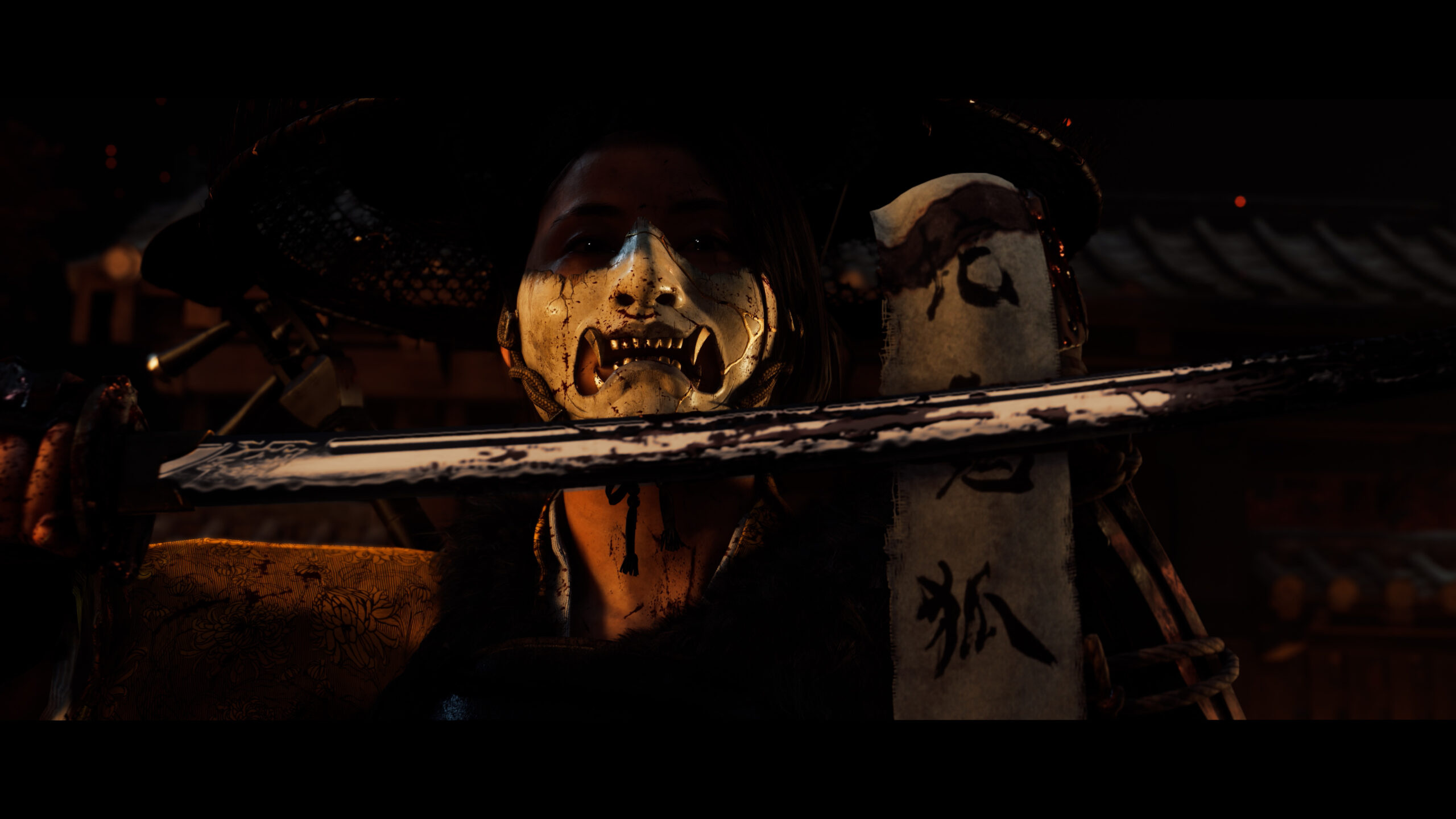 Exploration expands Ezo’s expanse into an “open-world opus” of optional odysseys: wind-whipped wilds where golden birds beckon to onsen oases for health hikes, fox-following foxfire trails to Inari shrines for charm charms that charm chainsaws into chain reactions. New nods to Nippon’s north: sumi-e ink sessions supplant haiku haikus, brushing bamboo backdrops for bounty boosts; zeni hajiki gambling dens dice destiny for duelist duels; shamisen strums summon spectral songs that spotlight landmarks like lost lighthouses. Camps cradle the calm: cook kitsune udon for vigor vials or craft caltrops from canyon clams, a homestead haven that heals without halting the hunt. Side quests, while “prehistoric” in their predictability, bounty hunts for bandit bounties, mastery missions for melee maneuvers, still sparkle with specificity, like a haiku-haunted hot spring where verse unlocks a veiled vista. It’s a sandbox sculpted with samurai subtlety, where every emote, bathing in bliss or bamboo-bashing for zen, etches Atsu’s evolution from avenger to artisan.
Exploration expands Ezo’s expanse into an “open-world opus” of optional odysseys: wind-whipped wilds where golden birds beckon to onsen oases for health hikes, fox-following foxfire trails to Inari shrines for charm charms that charm chainsaws into chain reactions. New nods to Nippon’s north: sumi-e ink sessions supplant haiku haikus, brushing bamboo backdrops for bounty boosts; zeni hajiki gambling dens dice destiny for duelist duels; shamisen strums summon spectral songs that spotlight landmarks like lost lighthouses. Camps cradle the calm: cook kitsune udon for vigor vials or craft caltrops from canyon clams, a homestead haven that heals without halting the hunt. Side quests, while “prehistoric” in their predictability, bounty hunts for bandit bounties, mastery missions for melee maneuvers, still sparkle with specificity, like a haiku-haunted hot spring where verse unlocks a veiled vista. It’s a sandbox sculpted with samurai subtlety, where every emote, bathing in bliss or bamboo-bashing for zen, etches Atsu’s evolution from avenger to artisan.
Aurora’s Palette: A Post-Feudal Fresco
Visually, Ghost of Yōtei is a breathtaking bijin-ga brought to barbaric life, Sucker Punch’s Hokkaido homage a hyper-real hymn to the north’s numinous nuance: wildflower meadows that wave like watercolor waves under aurora’s ethereal embrace, snow-swept slopes that shimmer like shattered silk, and volcanic vents that vent vermilion vapors like vengeful veins. Ezo’s environs eclipse Tsushima‘s Tsushima with climatic caprice, blizzards that blanket blades in brittle frost, monsoons that muddle maps into misty mirages, dynamic deluges that dazzle in 4K fidelity, ray-traced reflections rippling in rain-lashed rice paddies or aurora arcs arcing over Ainu-inspired a-frames. Atsu’s animations ache with authenticity: her ōdachi’s overhead heft heaves with heroic heft, dual-katanas whirl like whirlwind waltzes, while wolf’s woolly pelt pelts pursuers with pixel-perfect pelts.
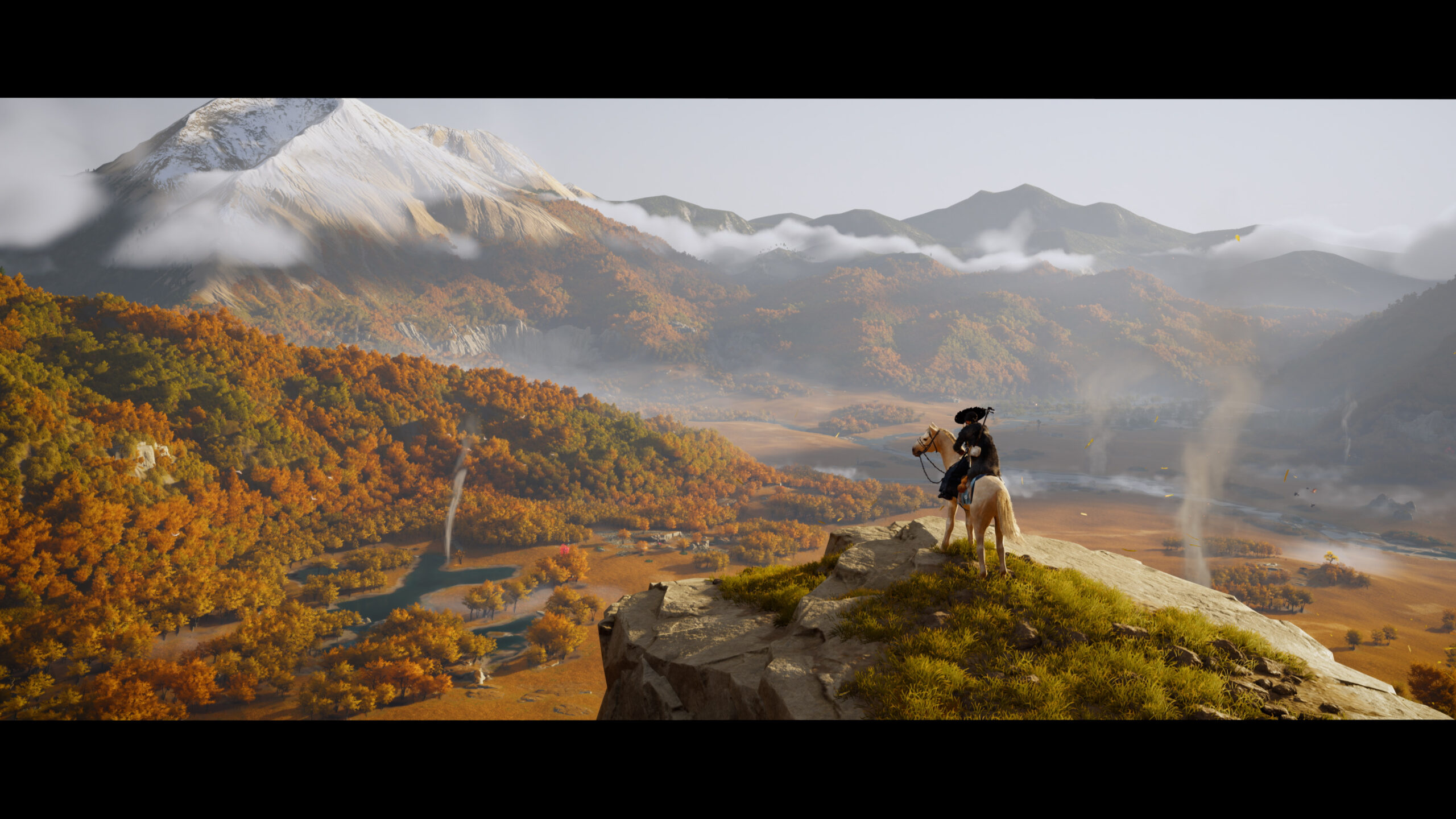 The art direction, drawn from Shiretoko’s stark splendor and Yōtei’s yōkai yarns (consulted Ainu artisans etched emblems and etymology), alchemizes authenticity with artistry: torii gates totter in typhoon tempests, onsen mists mask monstrous melees, all in a palette that pivots from pastel peace to crimson carnage. Kurosawa Mode’s monochrome majesty returns, black-and-white brushes evoking Seven Samurai‘s stoic strokes, joined by Miike’s mud-and-blood mania (desaturated dread with gore-glossed gloss) and Watanabe’s Cowboy Bebop cool (cel-shaded swagger with synthwave silhouettes). Performance on PS5 Pro purrs at pristine parity, 60fps fluidity framing foxfire flickers, though base model’s blizzard blurs occasionally blur the bliss, a patch-pledged polish for the purists. Audio is the abyss’s anthem: Inon Zur’s score swells from shamisen shivers to taiko thunder, a Hokkaido hymn that haunts with haiku harmony, while 3D binaural booms, wind’s wistful whoosh, blade’s brutal bite, burrow into the brain. Ishii’s Atsu snarls with snarling soul, Ai’s iteration infuses icy ire, a dual-voiced duality that doubles the dread. It’s a sensory shogun that subjugates, minor menu muddles melting in the majesty.
The art direction, drawn from Shiretoko’s stark splendor and Yōtei’s yōkai yarns (consulted Ainu artisans etched emblems and etymology), alchemizes authenticity with artistry: torii gates totter in typhoon tempests, onsen mists mask monstrous melees, all in a palette that pivots from pastel peace to crimson carnage. Kurosawa Mode’s monochrome majesty returns, black-and-white brushes evoking Seven Samurai‘s stoic strokes, joined by Miike’s mud-and-blood mania (desaturated dread with gore-glossed gloss) and Watanabe’s Cowboy Bebop cool (cel-shaded swagger with synthwave silhouettes). Performance on PS5 Pro purrs at pristine parity, 60fps fluidity framing foxfire flickers, though base model’s blizzard blurs occasionally blur the bliss, a patch-pledged polish for the purists. Audio is the abyss’s anthem: Inon Zur’s score swells from shamisen shivers to taiko thunder, a Hokkaido hymn that haunts with haiku harmony, while 3D binaural booms, wind’s wistful whoosh, blade’s brutal bite, burrow into the brain. Ishii’s Atsu snarls with snarling soul, Ai’s iteration infuses icy ire, a dual-voiced duality that doubles the dread. It’s a sensory shogun that subjugates, minor menu muddles melting in the majesty.
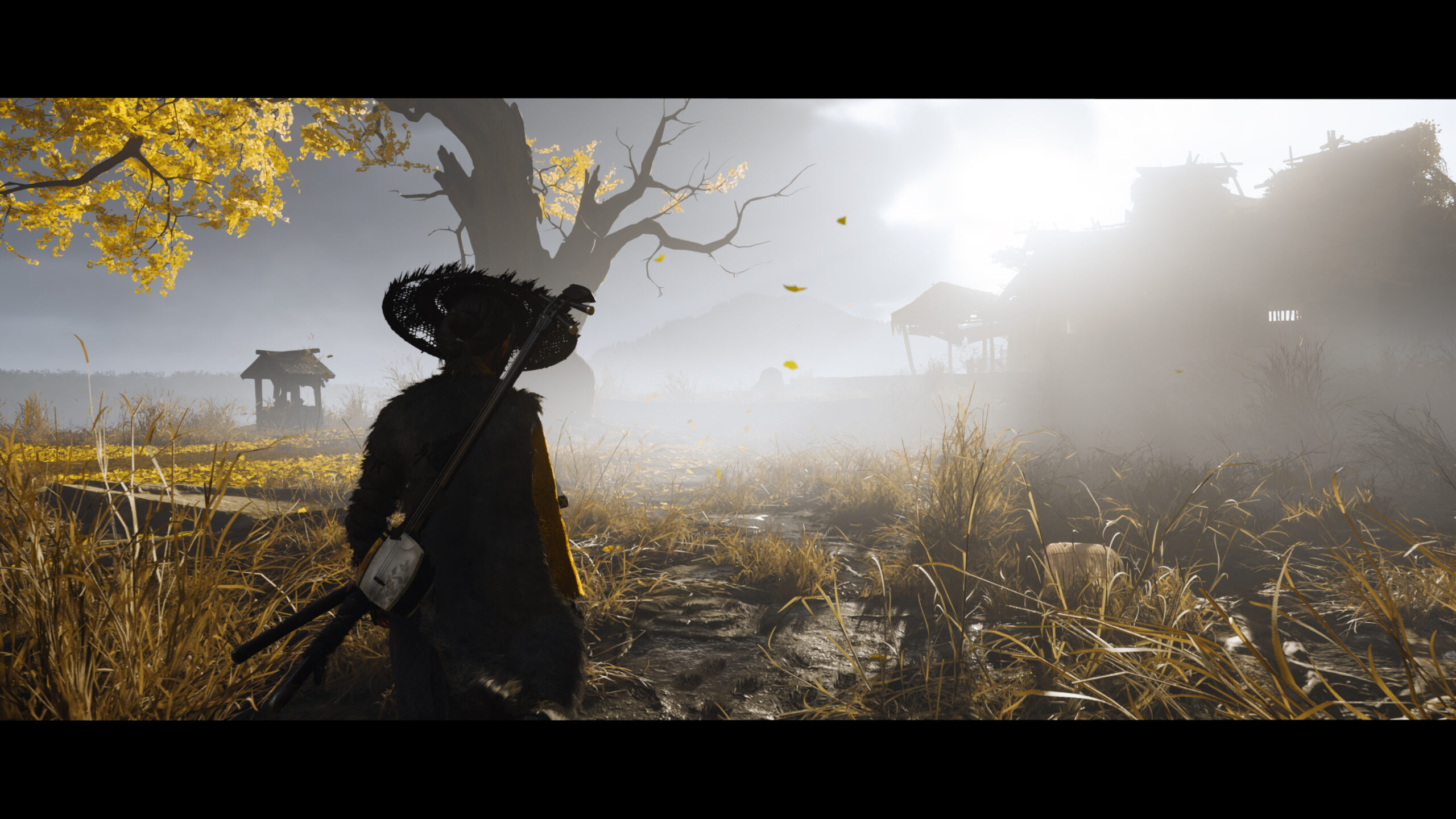 Yōtei’s Yarns: Peaks, Pitfalls, and Onryō Oddities
Yōtei’s Yarns: Peaks, Pitfalls, and Onryō Oddities
Ghost of Yōtei‘s yōkai yield a bounty of brilliance: the counter cascade’s combinatorial cunning, where kusarigama chains counter ōdachi overreaches in a weapon waltz that’s “swordplay’s summit,” as slayers swoon, and exploration’s empyrean expanse, a 30-hour hike through Hokkaido’s heartlands where aurora arcs illuminate Ainu altars and onsen oases offer organic oases. The non-linear nemesis hunt hooks like a harpoon: tackle the Spider’s silken snares in spiderweb shrines or the Dragon’s draconic dives in dragonbone dojos, each lieutenant a legend-laden labyrinth that layers lore with lethal lures. Side scrolls, while “prehistoric” in their pedestrian plods, bounty boards barking bandit bashes, still sparkle with specificity, like zeni hajiki dens where dicey duels dice destiny for duelist duels, or sumi-e sessions that ink introspection into inventory. At its $70 mantle, with 95% recommendation rapture and Metacritic’s 88 aggregate, it’s a sales supernova (topping charts in 13 countries), bolstered by Legends’ looming 2026 co-op crescendo, two-player tales of mythic melees against monstrous Yōtei shades.
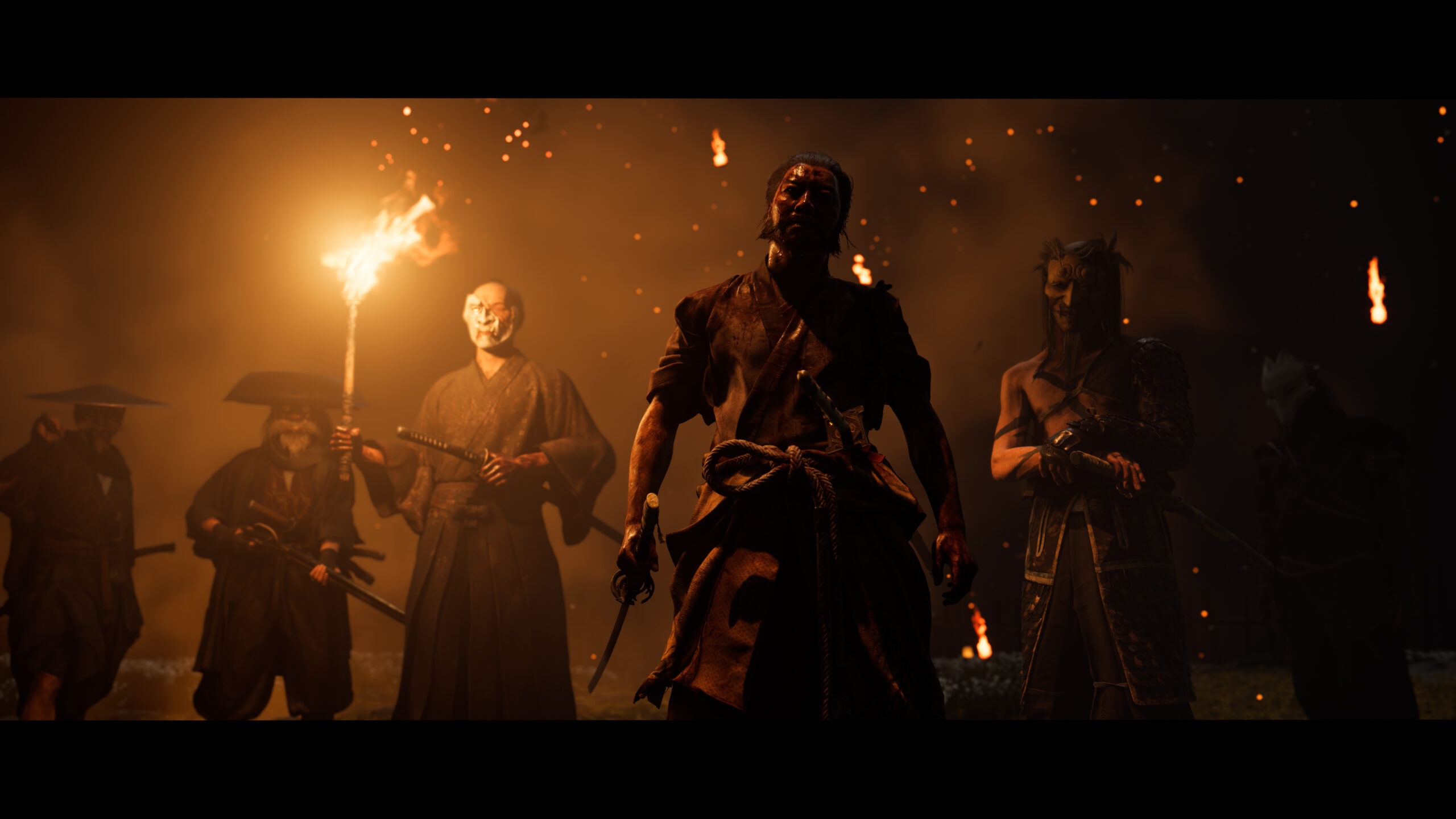 Pitfalls pock the path, however: the pacing’s ponderous plod in principal pursuits, a “questionable quest” that quests too languidly through lieutenant lulls, and side quests’ “prehistoric” pallor, fetch-fests that fetch frustration without flair, as one wanderer wailed after wearying of wildflower whims. Combat’s cascade, while captivating, cascades into repetition, disarms dazzle but devolve into disarm drudgery against grunt gaggles, and the open world’s “dated” sprawl, while scenic, sags under scavenger hunts that scavenge scant satisfaction. The dev drama’s doxxed dust-up, a Bluesky barb birthing boycotts, casts a controversial comma, though critics cleaved it as “unrelated rot” to the radiant revenge riff. Community clamor crowns the combat’s “cathartic cleave,” one streamer slaying the Snake in a “snarling symphony” that synced with Ishii’s ire, while whispers warn of “wolf woes”, summons that summon sparingly in sprawl. Humor haunts the hubris: a bounty’s ballad that bungles Atsu’s moniker as “Onryō Oprah,” a wry riff on her reluctant renown.
Pitfalls pock the path, however: the pacing’s ponderous plod in principal pursuits, a “questionable quest” that quests too languidly through lieutenant lulls, and side quests’ “prehistoric” pallor, fetch-fests that fetch frustration without flair, as one wanderer wailed after wearying of wildflower whims. Combat’s cascade, while captivating, cascades into repetition, disarms dazzle but devolve into disarm drudgery against grunt gaggles, and the open world’s “dated” sprawl, while scenic, sags under scavenger hunts that scavenge scant satisfaction. The dev drama’s doxxed dust-up, a Bluesky barb birthing boycotts, casts a controversial comma, though critics cleaved it as “unrelated rot” to the radiant revenge riff. Community clamor crowns the combat’s “cathartic cleave,” one streamer slaying the Snake in a “snarling symphony” that synced with Ishii’s ire, while whispers warn of “wolf woes”, summons that summon sparingly in sprawl. Humor haunts the hubris: a bounty’s ballad that bungles Atsu’s moniker as “Onryō Oprah,” a wry riff on her reluctant renown.
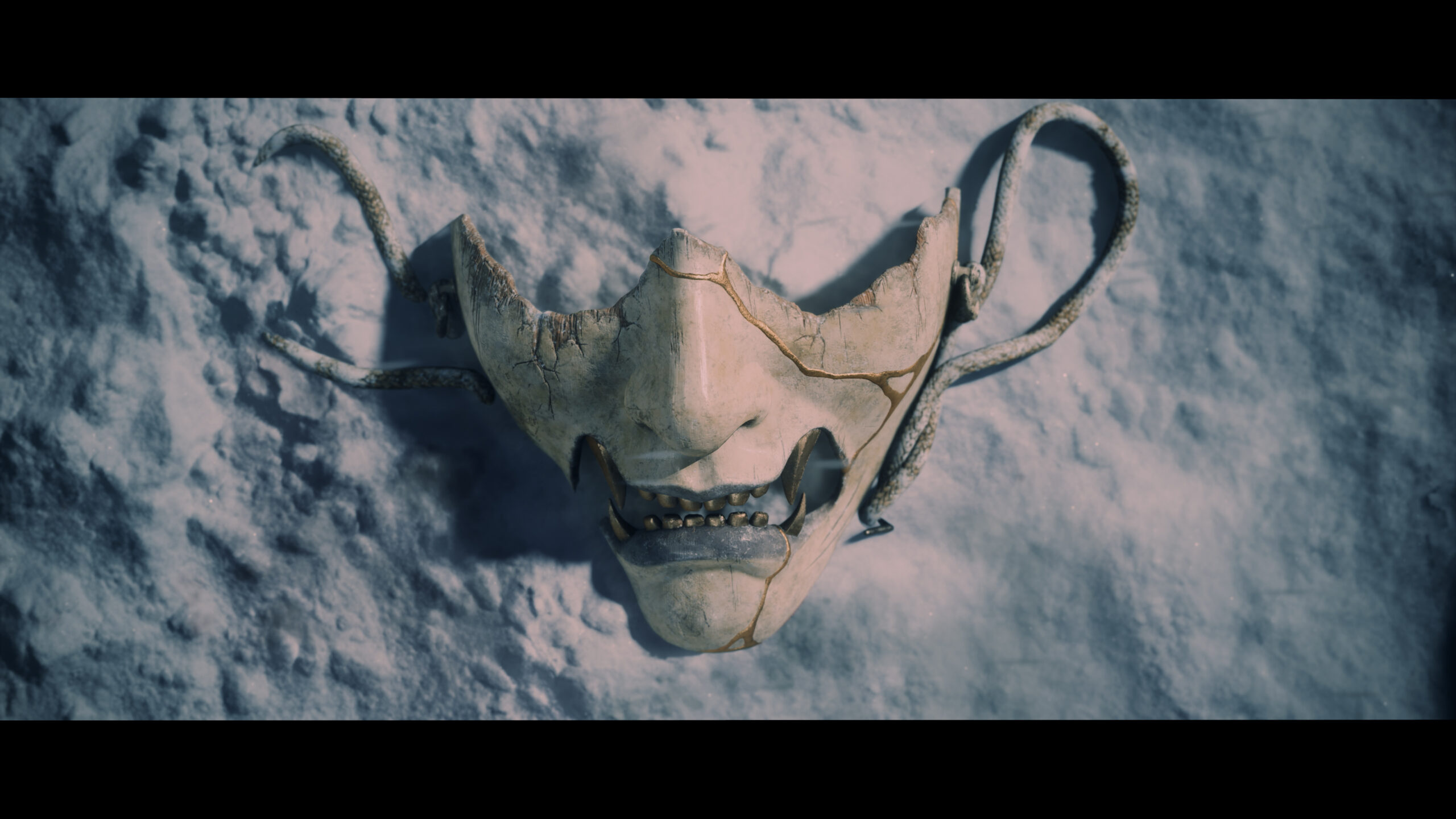 It’s a yōkai yarn that yanks yens but yips at yarns’ yarns, a vengeful vintage with vintage vintages.
It’s a yōkai yarn that yanks yens but yips at yarns’ yarns, a vengeful vintage with vintage vintages.
Onryō’s Oath: Folklore Forged in Fury
What whets Ghost of Yōtei‘s whetstone is its unflinching fusion of frontier folklore and feminist fire: Atsu’s onna-musha mantle, a matriarchal maelstrom that mashes Tsushima‘s honor-bound hush with Lady Snowblood‘s snowy slaughter, probing patriarchal poisons in postwar precincts where Ainu authenticity (elders etched emblems, etymology) alchemizes education with exhilaration. It’s purposeful parry, the weapon counter’s combinatorial calculus a classroom in choreography, yari vs. yokel, kusarigama vs. kitsune, teaching topography’s tricks without tedious tomes, a subtle samurai seminar for sword-sworn scholars. The aurora’s artistry, drawn from Shiretoko’s stark splendor, underscores the saga’s soul: vengeance as vortex, where side scrolls like shamisen strums summon spectral songs that spotlight landmarks, weaving whimsy into the whirlwind.
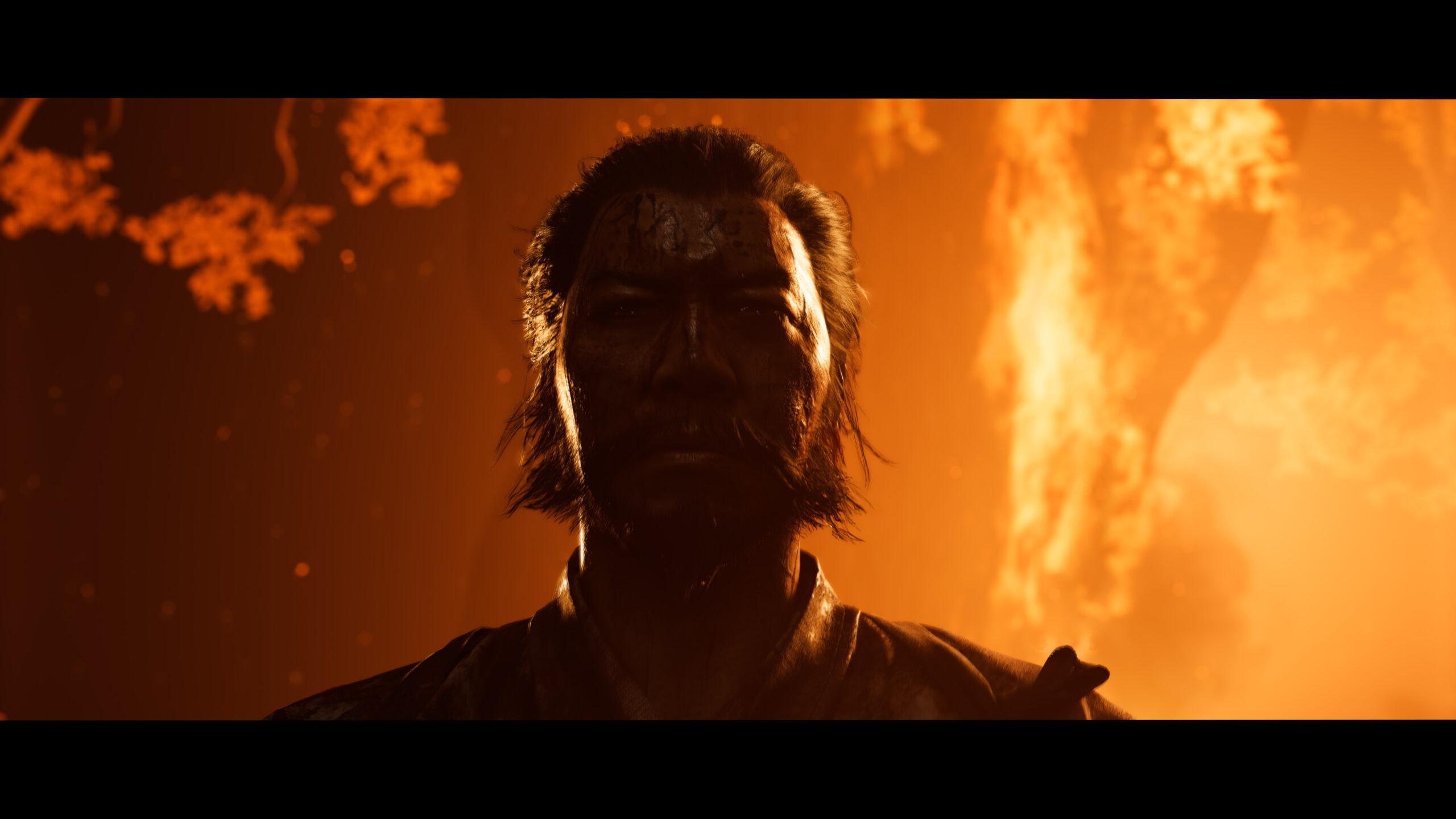 Unique unearthings enchant: the “ink immersion” in sumi-e sessions, where brushstroke battles banish boss-born blurs, or the wolf’s “pack pact,” a summon that scales with sibling synergies (Jubei’s javelin joins the jamboree). Against Sekiro‘s solitary snarls, Yōtei’s yarn yanks the yoke of companionship, Oyuki’s atonement arc a atonement anthem that atones for Tsushima‘s taciturnity. Player pilgrims proclaim its “psychic punch,” one recounting a “regret riddle” that resurfaced real regrets, underscoring its therapeutic terror.
Unique unearthings enchant: the “ink immersion” in sumi-e sessions, where brushstroke battles banish boss-born blurs, or the wolf’s “pack pact,” a summon that scales with sibling synergies (Jubei’s javelin joins the jamboree). Against Sekiro‘s solitary snarls, Yōtei’s yarn yanks the yoke of companionship, Oyuki’s atonement arc a atonement anthem that atones for Tsushima‘s taciturnity. Player pilgrims proclaim its “psychic punch,” one recounting a “regret riddle” that resurfaced real regrets, underscoring its therapeutic terror.
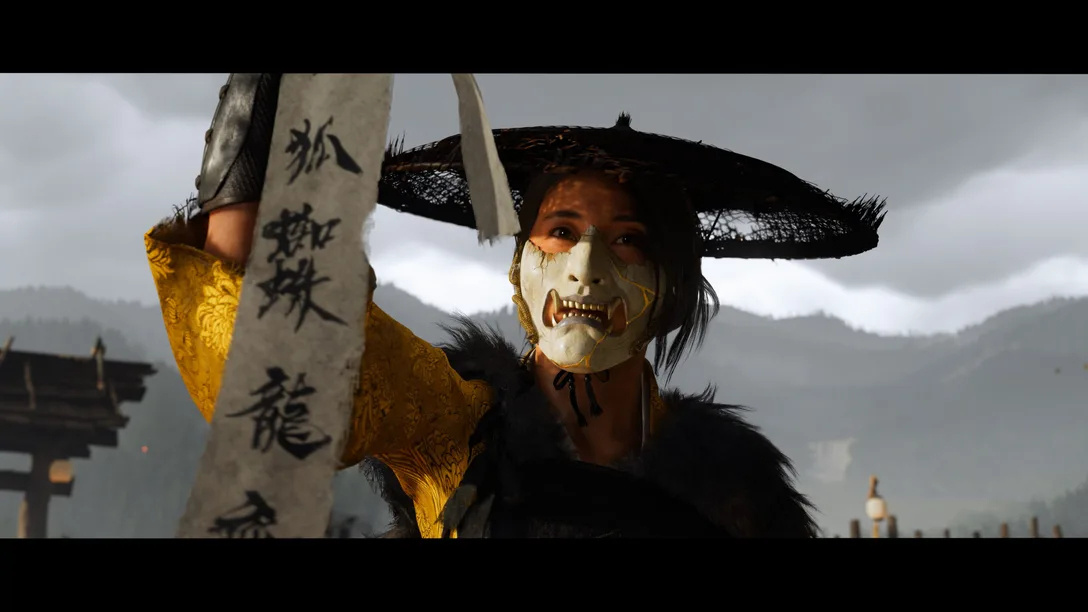 It’s no mere miasma: a manifesto of madness mastered, where every ending etches empathy in the ether.
It’s no mere miasma: a manifesto of madness mastered, where every ending etches empathy in the ether.
Final Thoughts
Ghost of Yōtei whets the whetstone of samurai sagas with a vengeance vortex that’s visually volcanic and narratively nuanced, a 40-50 hour odyssey that outpaces its predecessor in Atsu’s arc and aurora artistry. The counter cascade’s combinatorial carnage crafts combats that cleave like cinematic katanas, while Ezo’s empyrean expanse, wildflower wilds to onsen oases, offers organic odysseys that outshine Tsushima‘s sprawl. Side scrolls, though “prehistoric” in plod, still sparkle with specificity, and the non-linear nemesis hunt hooks like a harpoon, turning lieutenant lulls into legend-laden labyrinths.
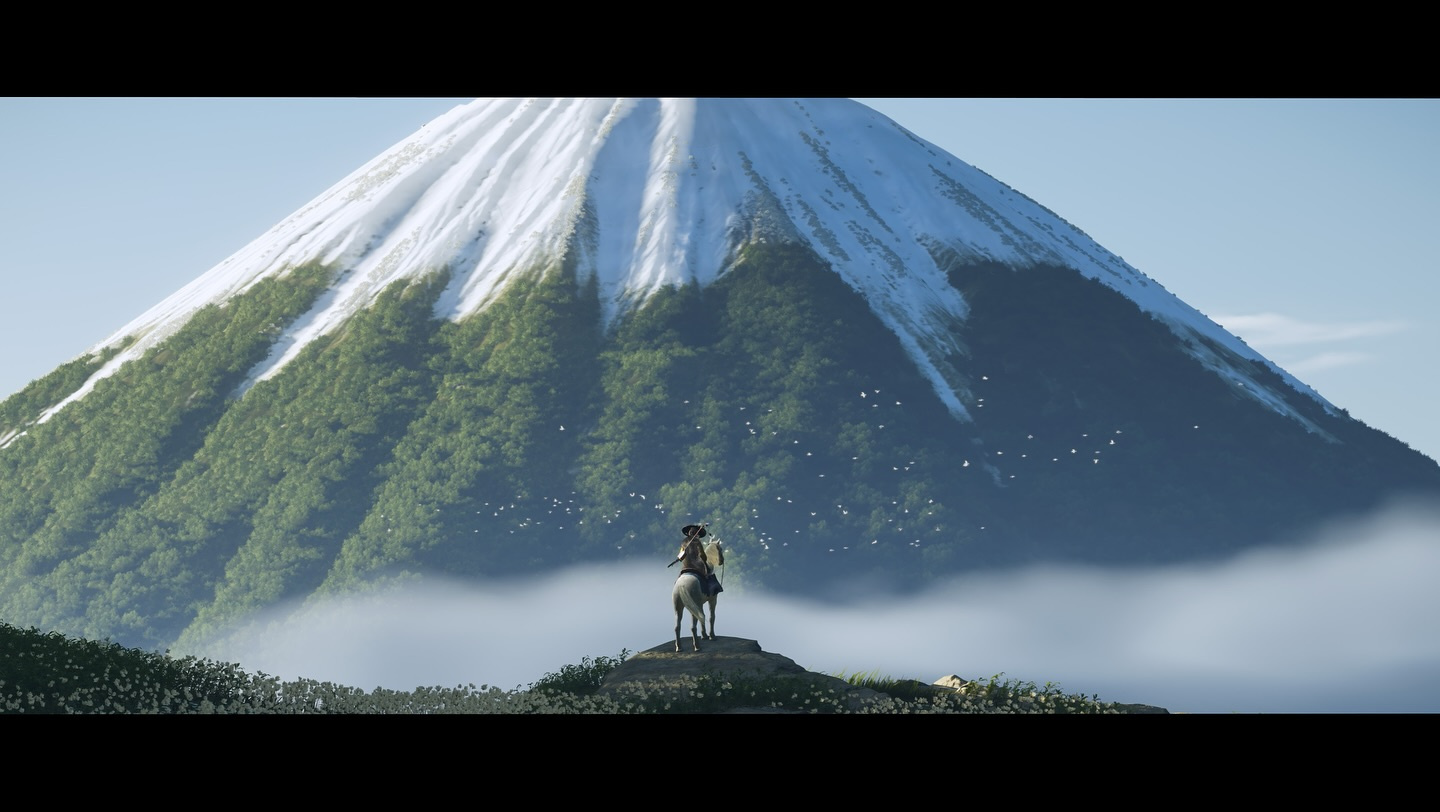 Pacing’s ponderous plods and side quests’ sagging satisfaction snag the stride slightly, with dated detours dimming the dread. Yet, these are nicks in a noble naginata, the sequel’s spectral summons and sumi-e serenity ensuring a shiver that lingers like northern nightfall. For Tsushima trailblazers or onna-musha acolytes, it’s a Hokkaido hymn, a vengeful vintage that vindicates the veil.
Pacing’s ponderous plods and side quests’ sagging satisfaction snag the stride slightly, with dated detours dimming the dread. Yet, these are nicks in a noble naginata, the sequel’s spectral summons and sumi-e serenity ensuring a shiver that lingers like northern nightfall. For Tsushima trailblazers or onna-musha acolytes, it’s a Hokkaido hymn, a vengeful vintage that vindicates the veil.
We prepared this review with a digital copy of Ghost of Yōtei for the PS5 version provided by Sony Interactive Entertainment.

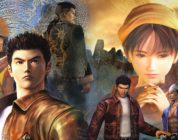


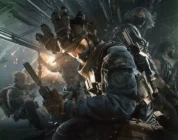
FSObMLpFJEtFAWIiLXCRXZ
kyUhDFuqIinSXNZHWyps
kyrsi seo_bhKn
школа seo [url=www.kursy-seo-12.ru/]www.kursy-seo-12.ru/[/url] .
Diplomi_sdEi
медсестра которая купила диплом врача [url=https://www.frei-diplom13.ru]https://www.frei-diplom13.ru[/url] .
1xbet_ulSt
1xbet giris [url=https://1xbet-17.com/]1xbet giris[/url] .
torkretirovanie_nzst
торкретирование бетона цена [url=https://torkretirovanie-1.ru/]торкретирование бетона цена[/url] .
torkretirovanie_mnst
торкрет бетон цена [url=https://torkretirovanie-1.ru/]торкрет бетон цена[/url] .
gidroizolyaciya podvala cena_zgsr
гидроизоляция подвала цена за м2 [url=https://www.gidroizolyaciya-podvala-cena.ru]гидроизоляция подвала цена за м2[/url] .
narkologicheskaya klinika_eyOt
частная наркологическая клиника москва [url=https://narkologicheskaya-klinika-28.ru/]частная наркологическая клиника москва[/url] .
pereplanirovka nejilogo pomesheniya_ddSI
согласование проекта перепланировки нежилого помещения [url=www.pereplanirovka-nezhilogo-pomeshcheniya16.ru]www.pereplanirovka-nezhilogo-pomeshcheniya16.ru[/url] .
1xbet giris_joKt
1xbet mobi [url=http://1xbet-giris-8.com]1xbet mobi[/url] .
medicinskaya tehnika_zeEl
медтехника [url=medicinskaya-tehnika.ru]medicinskaya-tehnika.ru[/url] .
zakazat onlain translyaciu_dhpa
видео трансляция заказать [url=https://zakazat-onlayn-translyaciyu5.ru]https://zakazat-onlayn-translyaciyu5.ru[/url] .
rylonnie shtori s elektroprivodom_ager
купить рулонные шторы москва [url=rulonnye-shtory-s-elektroprivodom7.ru]купить рулонные шторы москва[/url] .
optimizaciya i seo prodvijenie saitov moskva_mwsi
технического аудита сайта [url=https://optimizaciya-i-seo-prodvizhenie-sajtov-moskva.ru/]https://optimizaciya-i-seo-prodvizhenie-sajtov-moskva.ru/[/url] .
optimizaciya i seo prodvijenie saitov moskva_wlsi
оптимизация сайта франция цена [url=https://optimizaciya-i-seo-prodvizhenie-sajtov-moskva.ru/]optimizaciya-i-seo-prodvizhenie-sajtov-moskva.ru[/url] .
Smart Way_ifpt
смартвэй официальный сайт смвэй [url=https://sajt-smart-way.ru/]https://sajt-smart-way.ru/[/url] .
yzakonit pereplanirovky cena_gjel
перепланировка квартиры москва стоимость [url=https://uzakonit-pereplanirovku-cena.ru/]https://uzakonit-pereplanirovku-cena.ru/[/url] .
icebet casino_ibSi
icebet casino bonus code [url=www.icebet-online.com/]www.icebet-online.com/[/url] .
kyrsi seo_cvKn
курсы seo [url=http://kursy-seo-12.ru]курсы seo[/url] .
kypit kyrsovyu_ymot
заказать курсовую работу качественно [url=https://kupit-kursovuyu-3.ru/]https://kupit-kursovuyu-3.ru/[/url] .
kypit kyrsovyu_zvKr
заказать практическую работу недорого цены [url=www.kupit-kursovuyu-4.ru]www.kupit-kursovuyu-4.ru[/url] .
kypit kyrsovyu_rhMl
написание курсовых работ на заказ цена [url=http://kupit-kursovuyu-9.ru/]http://kupit-kursovuyu-9.ru/[/url] .
reiting seo kompanii_fhPt
seo top agencies [url=reiting-seo-kompanii.ru]reiting-seo-kompanii.ru[/url] .
Diplomi_xkSn
купить аттестат 2005 [url=http://www.r-diploma18.ru]купить аттестат 2005[/url] .
Elektrokarniz_nrsi
электрокарнизы [url=http://provorota.su]http://provorota.su[/url] .
Elektrokarniz_uySi
автоматический карниз для штор [url=https://elektrokarniz495.ru]https://elektrokarniz495.ru[/url] .
Elektrokarnizi_bppr
электрокарниз купить в москве [url=http://elektrokarnizy77.ru]электрокарниз купить в москве[/url] .
elektrokarnizi dlya shtor_drMi
карнизы с электроприводом купить [url=https://elektrokarniz-dlya-shtor15.ru]карнизы с электроприводом купить[/url] .
narkologicheskaya klinika_kxEn
частная наркологическая клиника [url=http://www.narkologicheskaya-klinika-38.ru]частная наркологическая клиника[/url] .
ymnie shtori s alisoi_cgKl
умные шторы с алисой [url=www.prokarniz27.ru/]www.prokarniz27.ru/[/url] .
Diplomi_nxEn
купить обложку диплом [url=https://www.r-diploma10.ru]купить обложку диплом[/url] .